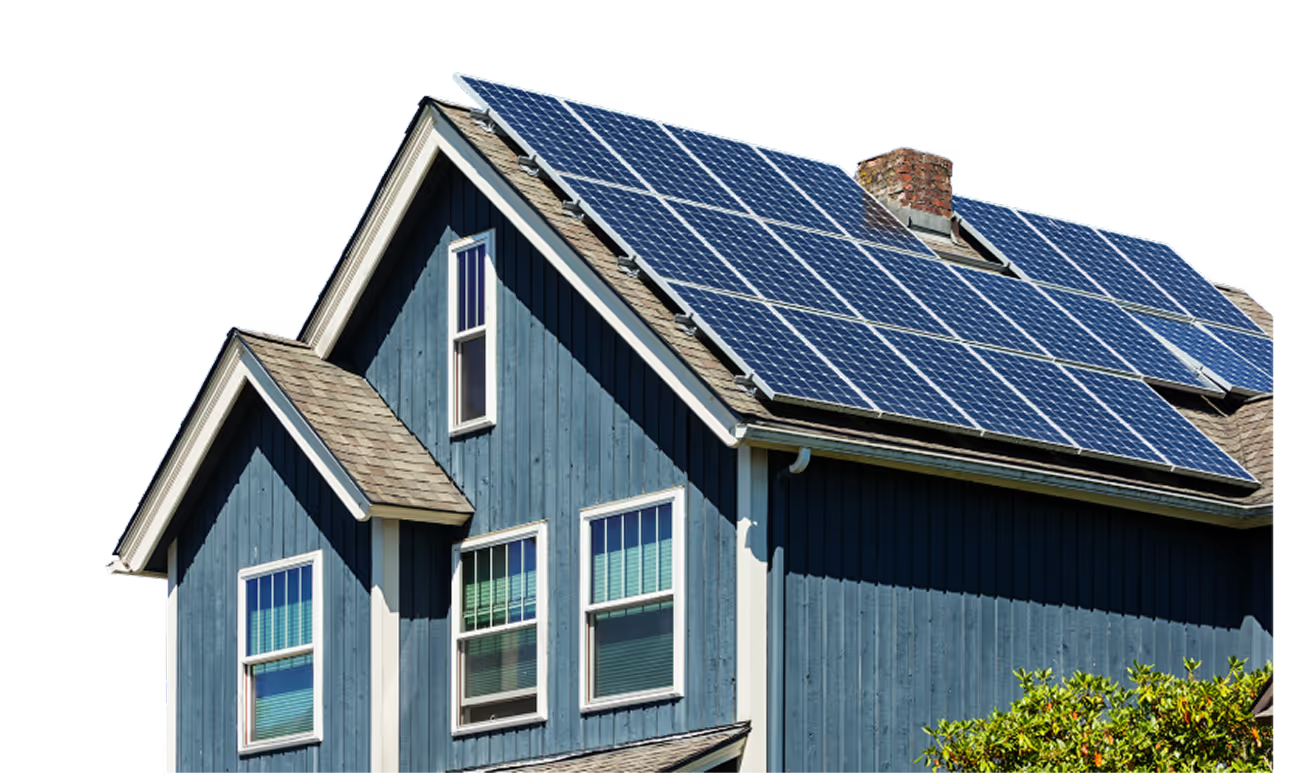
First, What Is GMIS-EB 2.0 All About?
As part of Singapore’s Green Building Masterplan to convert 80% of our buildings into green buildings by 2030, GMIS-EB 2.0 was launched in June 2022. Under this scheme, energy efficient retrofits are subsidised based on your potential carbon abatement, allowing you to methodologically achieve your goals of improved energy performance standards, while optimising your return on investment.
Check your eligibility at the bottom of this post.
How Can I Benefit From Green Building Retrofits?
You might then be wondering how much you actually stand to gain from applying for a Green Mark Rating and this scheme. Let us take a look at an example: NUS School of Design and Environment 4 Building (SDE4)

SDE4 was built in 2019, featuring cooling interior design systems and motion sensor LED lighting to increase energy efficiency. On top of that, it actually produces more energy than it consumes, with more than 1,200 solar panels that generated 500MWh of electricity by January 2020!
NUS attained the Green Mark Zero Energy Certification with these green building designs. With the GMIS-EB 2.0, you can not only effectively achieve your environmental goals, but also enjoy the immense cost savings.
Should I Get Solar Panels For My Green Building Retrofit?
With existing metering credit schemes put in place to sell excess solar electricity back to the grid, alongside many other financial incentives for going solar, you can break even on commercial solar installation in as short as 3-5 years.
Beyond that, solar is also a great pairing with other energy efficient equipment. Especially if you are aiming to hit the Green Mark “Super Low Energy” Or Green Mark “Zero Energy” tiers, where most, if not all your energy is supplied from renewable energy sources, solar is a flexible and highly cost-effective option to help you get certified.
If you’re considering installing solar photovoltaic panels as part of your building retrofit, try out this online solar assessment tool for an instant roof assessment and solar quote estimate with just a few clicks. Unlock the full potential of your building with GetSolar’s solar panel calculator!

How Does This Differ From GMIS – EB 1.0?
Besides the extended coverage to solar retrofits from GMIS-EB 1.0, there have been a few changes made to the criteria for applying, the funding allocated and other requirements.

These are explained in detail below:
1. Total Fund Size
Unlike the first green mark incentive scheme, GMIS-EB 1.0, which had a total fund size of $100 million, GMIS-EB 2.0 has a slightly smaller fund size of $63 million.
2. Floor Area Requirement
For GMIS-EB 1.0, the minimum gross floor area (GFA) is at least 2,000 square metres. However, this has been bumped up to a minimum of 5,000 square metres for GMIS-EB 2.0.
3. Central Chilled Water Air-Conditioning Plant Requirement
For GMIS-EB 1.0, one of the criteria to apply for the scheme was that you had to have a central chilled water air-conditioning plant, or at least are in the midst or planning to do so. This requirement has been removed for GMIS-EB 2.0.
4. Green Mark Requirement
GMIS-EB 1.0 required at least a Green Mark Gold, but GMIS-EB 2.0 requires at least Green Mark Platinum.
5. Types Of Buildings You Can Apply Under
Previously, only commercial buildings were accepted under GMIS-EB 1.0. For GMIS-EB 2.0, however, residential and light industrial buildings are allowed as well.
6. Funding
For GMIS–EB 1.0, the grant was a fixed co-funding rate based on 2 factors: Your Green Mark Requirement, as well as your aircon system efficiency. Disbursement of funds were also segregated into 3 phases.
For example, if you had at least Green Mark Gold, and an aircon system efficiency of at least 0.7kW/RT, this would have granted you a 35% co-funding rate capped at 1.5 million SGD.
GMIS-EB 2.0, however is slightly different:
- How the subsidy is calculated is that it will be a percentage of the qualifying cost you are allocated to, subjected to a funding cap.
- Qualifying cost is calculated based on how many tonnes of carbon emissions you can potentially reduce after your retrofit, in the lifespan of the new energy efficient equipment installed. (i.e dollars per tonne of CO2 emissions reduced) In other words, you are encouraged to seek technologies that are the most efficient and effective.
- Based on your Green Mark Requirement, the amount paid per tonne of CO2, as well as the funding cap, changes. The better your green mark requirement, the higher the amount paid per tonne of CO2 reduced, the higher your funding cap.
- Disbursement of funds is separated into only 2 phases instead of 3.
The technicalities of how funding is calculated will be elaborated below again, so not to worry if this appears confusing for now.
7. Approved Works
For GMIS – EB 1.0, you could choose from a list of 20 types of energy efficient equipment that will be accepted by BCA. For GMIS-EB 2.0, that has been expanded to 22 types, including on-site photovoltaic or other renewable energy sources.


If your scope of work does not appear in this list, you would have to seek approval from BCA separately first.
How Much Can I Be Funded Through The Green Mark Scheme?
The GMIS-EB 2.0 scheme provides different funding levels based on the Qualifying Tier that a company is able to achieve. The Green Mark Platinum is the highest amongst the BCA Green Mark Award tiers with a Green Mark score of 90 and above, standing on top of Green Mark Certified, Green Mark Gold and Green Mark Gold Plus respectively.
For customers who are considering a rooftop solar installation, we will recommend to opt for the Green Mark Super Low Energy (SLE) certification instead, wherein having a renewable energy source through rooftop solar panels can already help you to advance significantly in the scoring.
The funding on your equipment and solutions spend will then be calculated and submitted to BCA based on a funding factor using tons of CO2 emissions avoided or reduced. If this starts to get complex, feel free to reach out to us through our contact form here. The funding is then calculated based on the lower of a funding cap between $0.6 to 1.2 million, or 50% of qualifying costs.

Other Important Points To Know About GMIS-EB 2.0
Although GMIS-EB 2.0 is not open for application yet, it is always good to keep yourself educated about the scheme beforehand, so that application will be more smooth-sailing afterwards.
These are some key pointers to take note of before your application:
1. Subscribe To BCA’s Circular To Stay Updated
Although there is no specific date specified as to when GMIS-EB 2.0 will be open for application, you can stay updated on when it will be through BCA’s circular. To subscribe, you can click the link here.
2. Start Thinking About Which Design Strategies And Technologies You Want To Go For In Your Retrofit
Based on the list of works approved by BCA, you can choose to deploy a multitude of ways to improve the energy efficiency of your buildings.
The comprehensive list of common energy efficient equipment/technologies funded under GMIS-EB 2.0 is as shown above previously. A few examples of the scope of works funded under the scheme include:
- installation of solar photovoltaics or other renewable energy sources, and redesigning
- retrofits to cooling systems,
- spaces to incorporate natural ventilation or hybrid cooling.
How Much Funding Can I Expect To Receive?
Funding is largely based on your Green Mark certification rating. The higher it is, the more subsidies you will be entitled to.
This is how your subsidy is calculated:
- Based on the standard of your Green Mark, you will be allocated to a funding factor. This funding factor is used to calculate your qualifying cost.
- How qualifying cost is calculated is simple: It is basically how much CO2 you can potentially reduce with your new retrofits in its lifetime, multiplied by your funding factor.
- The final subsidy given is either 50% of the qualifying cost calculated, or the funding cap, depending on whichever is lower.
The grant will be disbursed in two tranches:
1st Disbursement
Building owners can apply for the first disbursement after receiving the grant LOA and commencement of retrofitting works. Relevant invoices must be submitted alongside with the disbursement application and building owners can only claim for items that have already been paid for up to the point of first disbursement application.
2nd Disbursement
After the retrofit works are completed, the building owners can apply for the second disbursement when the building has achieved the targeted Green Mark certification, obtaining the Green Mark Letter of Completion (GM LOC) and validated the targeted energy savings after operations have stabilised.
What Is The Eligibility For Funding?
Currently, you are eligible to apply if your privately-owned building meets the following criteria:
- Has a Gross Floor Area of 5,000 square metres and above
- Plans to undergo green retrofits
- Building falls under these 3 categories:
- Commercial and Institutional developments (e.g., hotels, offices, retail buildings, healthcare facilities, community institutions);
- Light industrial buildings* (excluding energy savings from manufacturing, industrial and commercial processes); and
- *Only applicable to light industrial buildings under building sector SSIC codes, beginning with 41-43, 46-47, 55-56, 59-62, 64-66, 68-75, 77-82, 84-88, 90-97 and 99
- *Only applicable to light industrial buildings under building sector SSIC codes, beginning with 41-43, 46-47, 55-56, 59-62, 64-66, 68-75, 77-82, 84-88, 90-97 and 99
- Residential buildings (energy savings from common areas / services).
- Commercial and Institutional developments (e.g., hotels, offices, retail buildings, healthcare facilities, community institutions);
All government-owned buildings and privately-owned buildings that are fully or partially funded by the Government are not eligible for the scheme.
Buildings which have participated in the previous Green Mark Incentive Schemes (GMIS), namely:
- Green Mark Incentive Scheme for Existing Buildings (GMIS-EB), and
- Green Mark Incentive Scheme for Existing Buildings and Premises (GMIS-EBP),
… are able to apply for GMIS-EB 2.0. However, any scope of works previously funded under GMIS and still within the period of useful life at point of application for GMIS-EB 2.0, will not be included in the computations for grant amount and qualifying cost under GMIS-EB 2.0.
Buildings that have applied for GMIS-EB 2.0 are not allowed to apply for other BCA incentive schemes. Building owners are required to declare upfront at application stage if their buildings had participated or are participating in any incentive schemes under BCA or other agencies.
Buildings applying for GMIS-EB 2.0 scheme will be assessed under the BCA Green Mark 2021 (GM:2021).
How Do I Get Green Mark Certified In The First Place?
In order to get green mark certified, do follow these 4 steps:
- Application – submit an application online with relevant supporting documents to indicate your interest to obtain Green Mark certification
- Pre-assessment (optional) – BCA will contact you for a pre-assessment audit to give your project team a detailed brief of the criteria
- Assessment
- BCA will review and verify the relevant reports and documentary evidence to ensure that the building project meets the intent of the criteria and certification level
- A letter of award will be issued for buildings which attain the Green Mark rating
- This is also used to calculate your expected funding amount based on funding factor (see above)
- Verification – finally, BCA will conduct site verification upon project completion and issue your Green Mark certification
How To Apply For GMIS-EB 2.0 Scheme After Getting Green Certification?
Interested applicants can submit an application via FormSG that is found on BCA’s webpage for GMIS-EB 2.0. You can also access this form directly by clicking here.
Do take note that you would require your corporate entity login and Singpass ID that will be included in your form submission.
You would be required to submit other supporting documents, including a Retrofit Proposal alongside your application that provides:
- the technical details of the project such as baseline measurements to determine the current energy performance of the building,
- calculations of expected carbon abatement from retrofit works over building lifespan, and
- proposed post-project Measurement and Verification (M&V) methodology as endorsed by a third-party Qualified Professional.
The full list of supporting documents are as follows:
- Accounting & Corporate Regulatory Authority (ACRA) business profile of Applicant (Building Owner)
- Certified true copy of the building’s Title Deed or Strata Title Deed
- Project schedule, including the projected commencement and completion dates of the physical on site works in relation to the carrying out of the Energy Improvement Works (EIWs) at the development
- Retrofit Proposal, endorsed by a third-party Qualified Professional. Please refer to the template “Retrofit Proposal and Report Template” below
- Certification showing the qualification of the Qualified Professional (Professional Engineer in Mechanical or Electrical Engineering, Registered Energy Auditor with BCA, or Green Mark Advanced Accredited Professional)
- Relevant sections of the contract document detailing the works and costs involved for the EIWs
- 2 additional quotations for each contract for assessment on price-reasonableness
- ACMV schematic drawing illustrating the chiller plant configuration for Light Industrial Buildings with chiller plant serving/cooling both processes and spaces
- Green Mark Letter of Award and Letter of Clearance for developments that have obtained a Green Mark rating
Do take note that only an officer listed as a Director in the business profile of the Applicant (Developer/Building Owner) (i.e. Registered Officer) can submit the Application on behalf of the Applicant.
Where the officer submitting the Application is not a Registered Officer, authorization from the Registered Officer must be granted for such officer to submit the Application on behalf of him/her. You can find the Authorization Request Template here.
A brief timeline of the application process is as shown below:

For a more detailed overall flowchart of the application and submission process, do head to the 2022 Circular on Green Mark Incentive Scheme for Existing Buildings 2.0 (GMIS-EB 2.0).
Get An Instant Solar Estimate For Your Property

Overall, switching to solar is one of the most high impact solutions you can implement for your building. Feel free to contact us to learn more or try out our free online solar assessment toolfor an instant roof assessment and solar savings estimate.

Rent-to-Own Solar for Business with Guaranteed Performance
Immediate ROI




Rent-to-Own Solar. $0 Upfront cost. Guaranteed Savings
(10-Year RTO plan)
+ 10-Year Free Maintenance




.png)

%20How%20Singapore%20Green%20Plan%202030%20supports%20solar%20adoptions.png)



